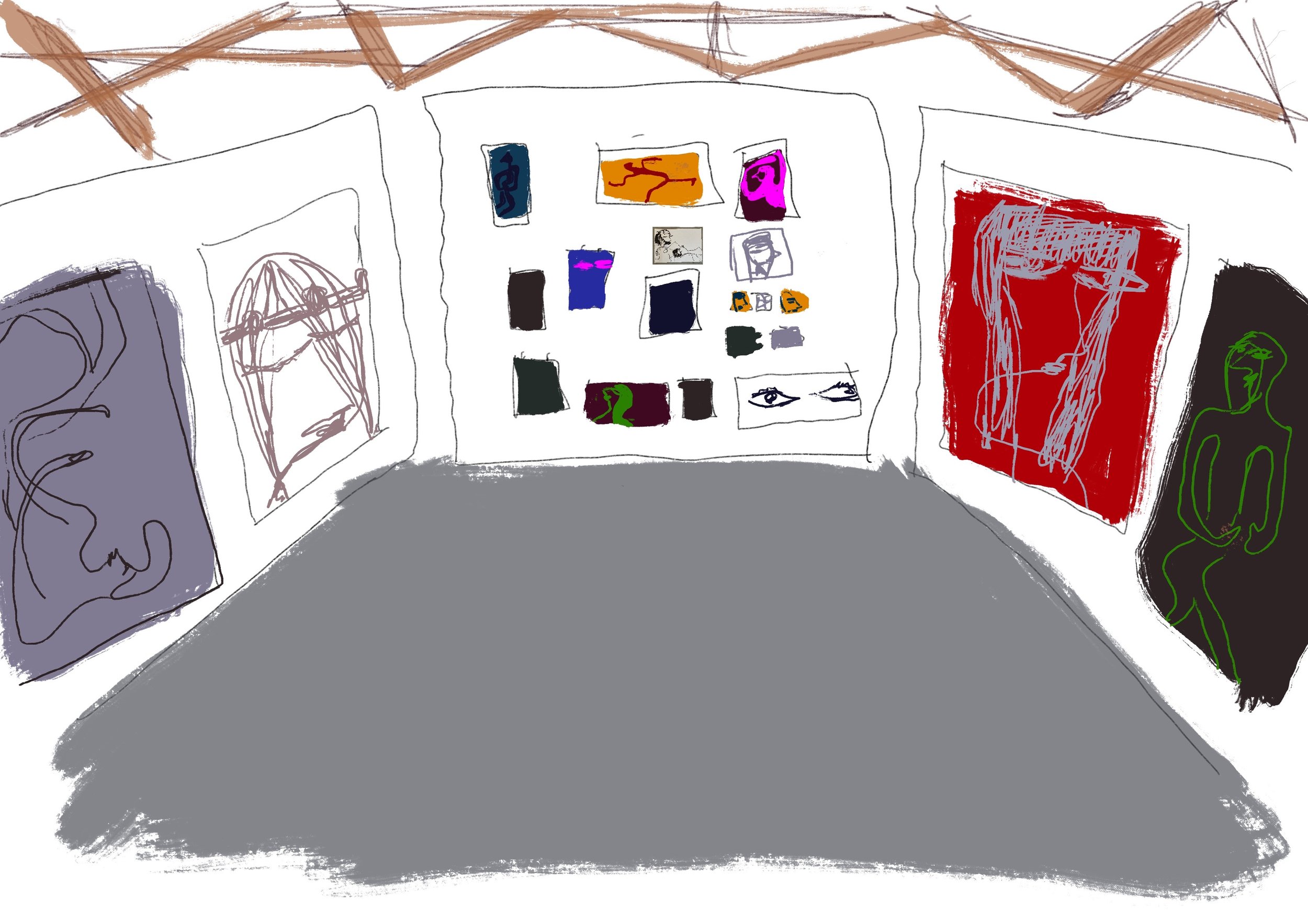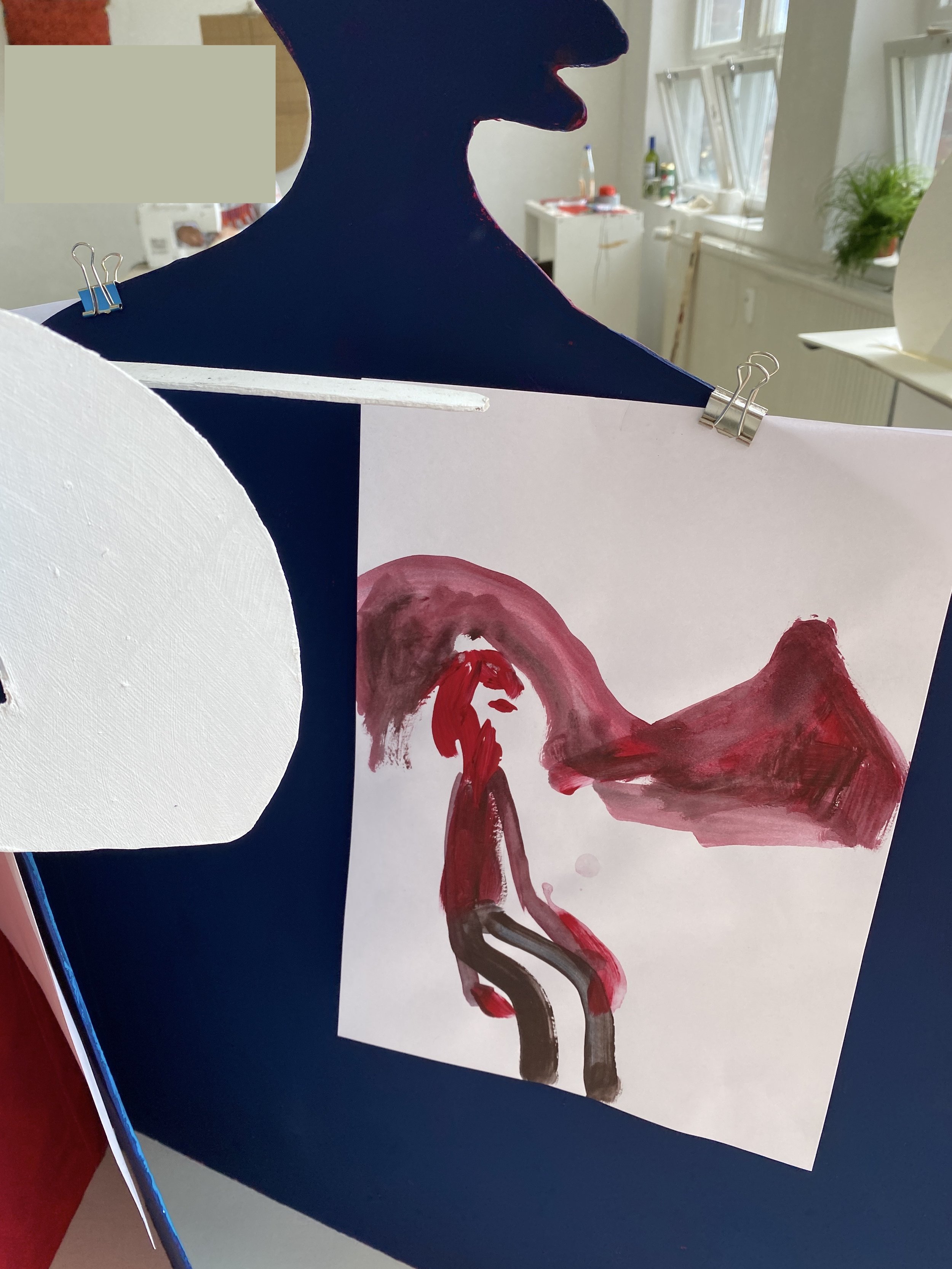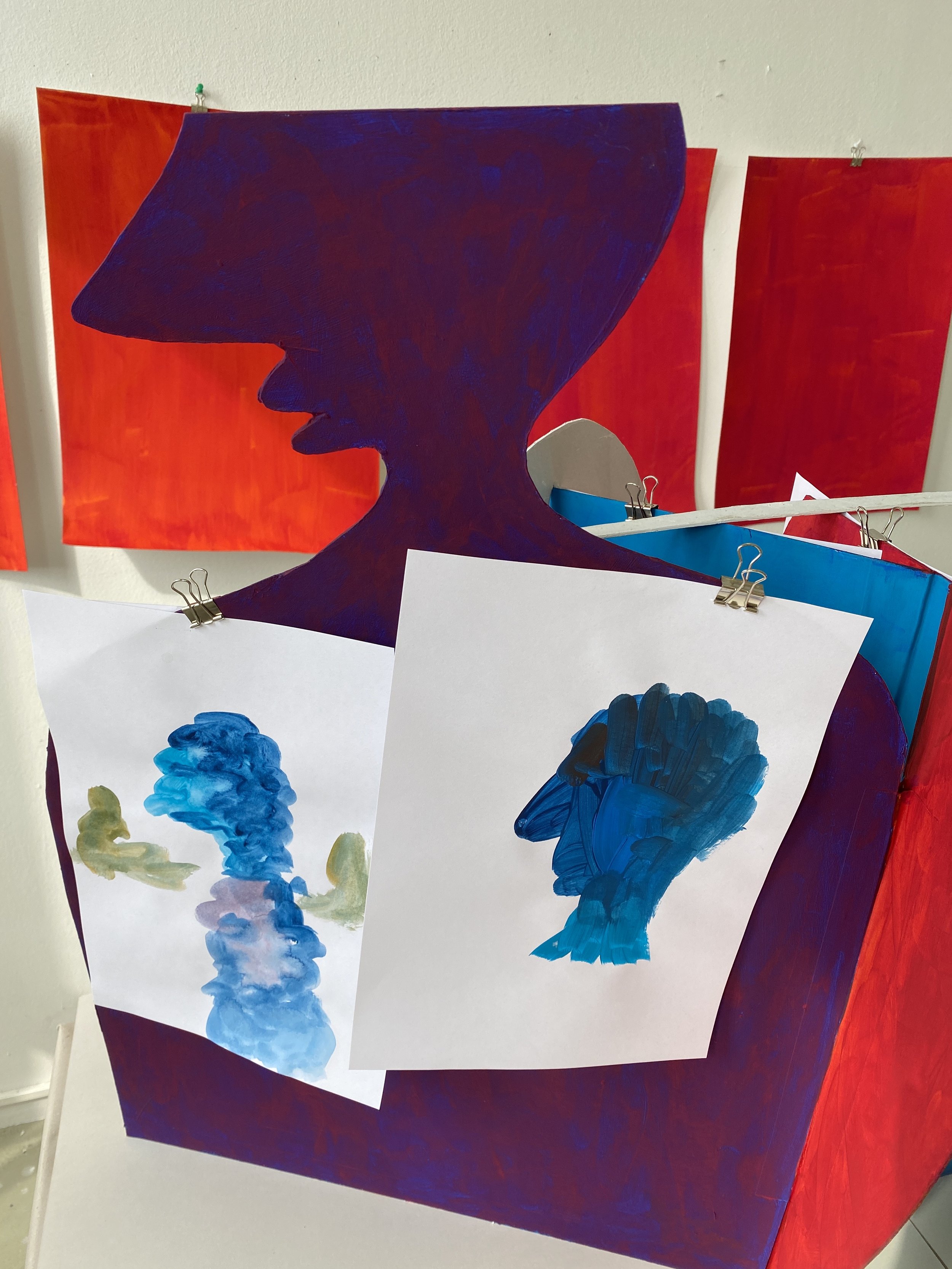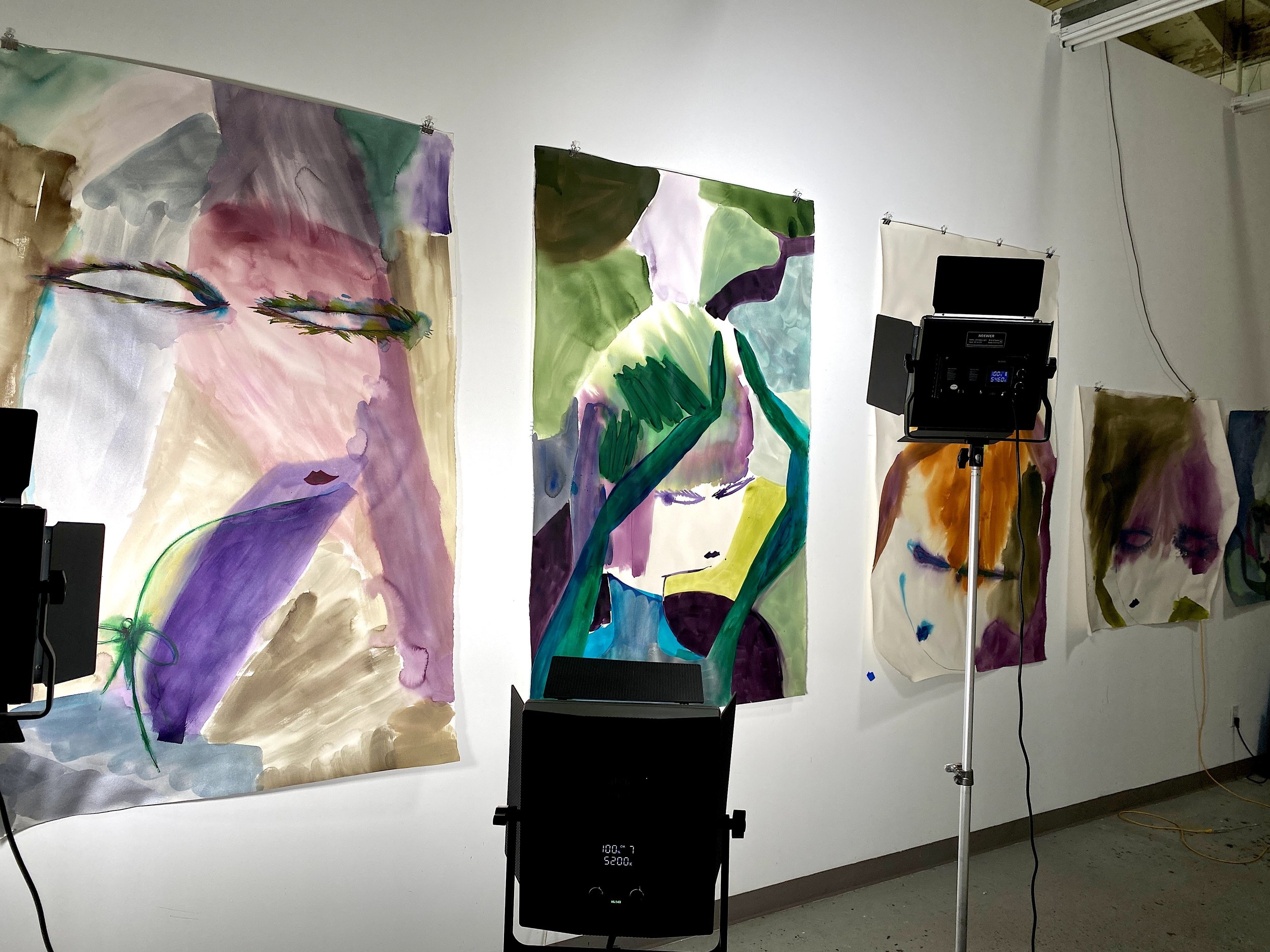Interview
Edie Beaucage
Los Angeles-based painter and video artist, Edie Beaucage, is committed to her direct and subjective imagination. She intends to create images in a vast spectrum of undefined categories, allowing vague ideas, inconclusive views, wobbly constructs, pleasure or sorrows, and fun to be included in the art conversation. This way, she actively opens up the critical discourse in new and different avenues.
Edie is an American artist who was born in Quebec, Canada, and currently lives and works in Los Angeles, California. She received her MFA from Otis College of Art and Design in 2010.
Edie has presented solo and group exhibitions in various galleries, and has been featured in numerous publications. She is represented in Los Angeles by Luis De Jesus and in Salt Lake City by Office Space, SLC.
What is your background and how did you start your journey in the art world?
“I grew up in French-speaking ‘Quebecoise’ in Montreal. I decided to become an artist after my father died of AIDS in 1991. He had been a closeted gay man and had maintained a double secret life since he was a teenager. After this traumatizing experience of seeing him suffer physically and socially, I became highly pro-gay rights. I thought it was unfair for anyone to live a conformist life and hide one’s sexual orientation because of societal taboos.
If you are a frustrated person, in the end you will make everyone around you miserable. My siblings, myself, and our mother really suffered from my father’s effects, and I felt that his tragic death was a sign for me not to make the same mistake. I took it as guidance that I should engage in a positive avenue about realizing the self and being good to others; or at least try.”
“My father had discouraged me from following my love of painting, but his death gave me courage. Even if it sounded impossible, becoming a painter was the path I felt I should follow. So right after he died, I took a second mortgage on my apartment and went to Florence, Italy. My goal was to learn classical drawing and painting techniques from the best Italian cultural periods of the Middle Age and the Renaissance. I stayed at 13 Via Della Spada for one healing year.
Following my new positive life choices, I moved to Los Angeles because of the great work I saw there, and because it is sunny, which is essential for a Quebecoise. I married a wonderfully talented architect, Glen Irani, and we had the joy of having our son Marlo. I hesitated for many years with the question of whether to do or not do a Master’s in fine art. That is the question for artists today. Personally, I was terrified of group critics. Fortunately, that was resolved when I participated in The Landmark Forum. It opened the opportunity for me to engage in critical discourse with the MFA program at Otis College. Armed with these tremendous disparate notions of classical, art-historical techniques and contemporary critical discourse, I jumped into the U.S’s fast-moving train of the art world. I was very fortunate to get gallery representation after graduation and started to have exhibitions right away.”
What does your work aim to say? Does it comment on any current social or political issues?
“Through my work, I wish to talk about imagination in contrast to political issues. I believe that society will be in grave trouble if we do not engage our imagination. This is evident in how a creator makes up an object, concept, or image from an elusive personal space. Since we all have a ton of knowledge and pictures in our memory, every person can create a different equation for an art piece. However, with the ever-growing influence of the MFA programs, many artists are currently involved in direct political discourse and similar works closer to journalistic endeavors. It is healthy and necessary for society to use the art platform to express different voices and complex political subjects. Still, there is something fundamental to consider: not all artists work and process the world in a prescribed critical way.
I believe that institutional and academic artmaking is becoming an intellectual mechanic. An object-oriented gymnastic routine. I actually like that, and I find it fantastic to see this in an exhibition. My worry is that in fact, everyone is digesting the same information on post-structuralist philosophers, ecological thoughts, and identity, and in turn, the works fall into a set of categories. That is what I find strange and limiting. I think the programs would benefit the artists by offering more freedom in addition to intellectual systems. I mean to open up the critical space to add other points of view that are not direct and established cannons of ‘criticality’. Not fitting in a category is being experimental.
Maybe we could start by connecting with our body and our messy emotions, wisdom, will, and heart. Smell perfume, taste spice, and create images in a vast spectrum of undefined categories. Allow fun, self-doubt, vague ideas, inconclusive views, craziness, hypocrisy, pleasure, sorrows, wilderness, wobbly constructs, and wildcards to be included in the art conversation.”
"Why would art be so driven by theories and disconnected from the artist? There is a new relationship between ego and authorship. I imagine artists sharing experiences and points of view, knowing they contribute to a creative conversation, making it personal but not egocentric.”
Which current art world trends are you following?
“One aspect of painting that is important to me is the current expansion of female painters’ reinvention of female imagery. It feels as if many artists simultaneously felt a desire to paint some cool-looking, boyish girls. Nicole Eisenman, Chantal Joffe, Jackie Gendel, Ida Applebroog, Summer Wheat, and Isabelle Fein all use female figures differently in a variety of circumstances.
Also, a new expression is emerging in the art conversation: a semi-figurative way of painting. It can be described as a painting with an equal balance between recognizable figures and abstract elements. It creates suggestive and open-ended spaces. For example, I use a few particular signs for my next exhibition—large eyes and extreme eyelashes with mixed running colors—to simultaneously suggest a character and mood. The eyes become the anchors for creating a spectrum of personalities that vary from introverts to extroverts.
I am definitely engaged in this new idea of Casualism; the figurative version of Casualism. I found the term in an article written by Sharon Butler in the Brooklyn Rail in 2011 called ‘Abstract Painting: The new Casualists’. Casualism encompasses the subject matter and how it is represented. That is the tendency painters have to currently paint in a very relaxed way, with casual subjects and settings. I would add that the artists I mentioned earlier are also Casualists, in my view.”
Do you plan your work in advance, or is it improvisation?
“I do both actively. I play with many levels of information for what looks like an improvisation but is very informed. I work in different directions on a subject matter. I obsessively collect images in notebooks of where the show’s ideas are going. I start by creating a sort of audition for my characters, a casting session where I interact and create different types of girls or boys, or something in between. Then after developing the exhibition’s main protagonists, I keep on making paintings with the characters. I have an image bank in mind that I use to paint for weeks. I paint freely with an intuitive flow, and I also favor pleasure in doing the work.”
What process, materials and techniques do you use to create your artwork?
“I conceptualize my exhibition using an iPad and design the show beforehand. I use the actual art gallery pictures and models of the walls. It is essential to see the show as a whole, not as a suite of different paintings. It should be seen as a transmission device with many pictures in communication and contrasts. The whole room is the platform for a dialogue between the images and the viewers.”
What does your art mean to you?
“I am committed to promoting intellectual and spiritual independence by using my imagination as raw material in my work. I have reconnected criticality to my reality by including myself in the process. I use memories of my sibling’s teenage years, with our flaws and particularities, as a primary creative source for my characters by imagining new versions of my sister Dominique, my brother Michel, and myself as protagonists in various new nonlinear scenarios.
My memories of movies, music, and art history are incorporated into the memories of my life. It is not separate. It is as if the perspective vision for my paintings is from my emotional point of view at age 12. I am showing how cool I thought my brother was when he was 18, and how beautiful my sister was to me with her long hair and body when she walked around our shared bedroom. We are cool in my paintings because we are of all times and move through acts of work, passion, romance, and leisure.
Without doing it on purpose, I’m preserving a certain level of an enigma in how my paintings come about. In a way, I favor furtive and inexplicable representation. Call it magical, strange, puzzling foxiness. It suggests traces of information that simply escapes me. These new elusive and magical ideas need time and public exposure to develop. That is why I enjoy getting feedback from my exhibitions.”
What’s your favorite artwork and why?
“I can connect to a Mesopotamian painting as if it was made yesterday. A Giotto touches me as much as a Francis Bacon or a Basquiat. That is what it means to me—connection through time and space. There are many ways to communicate: a narrative in literature, the words in a song, or movement in choreography.”
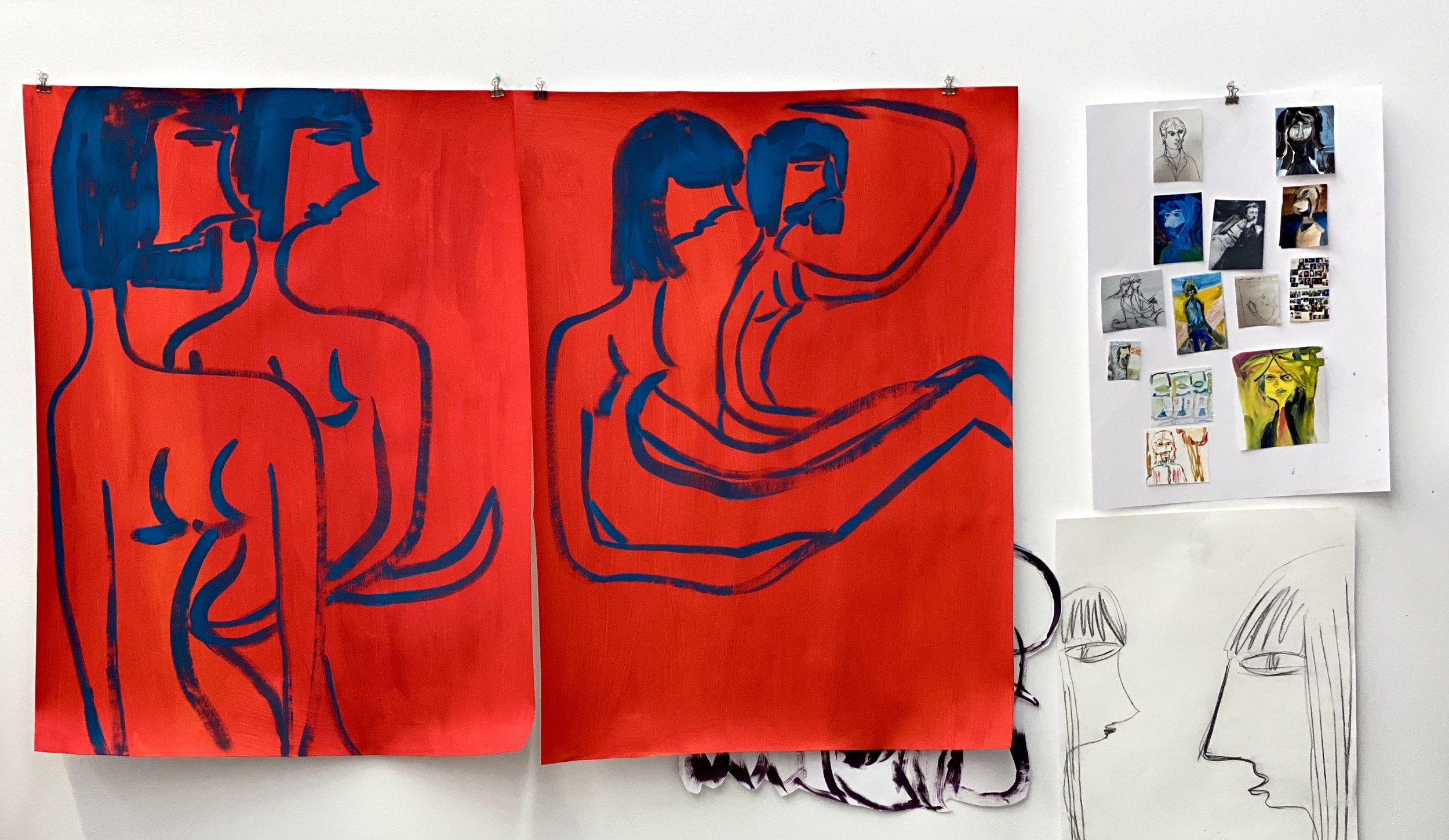
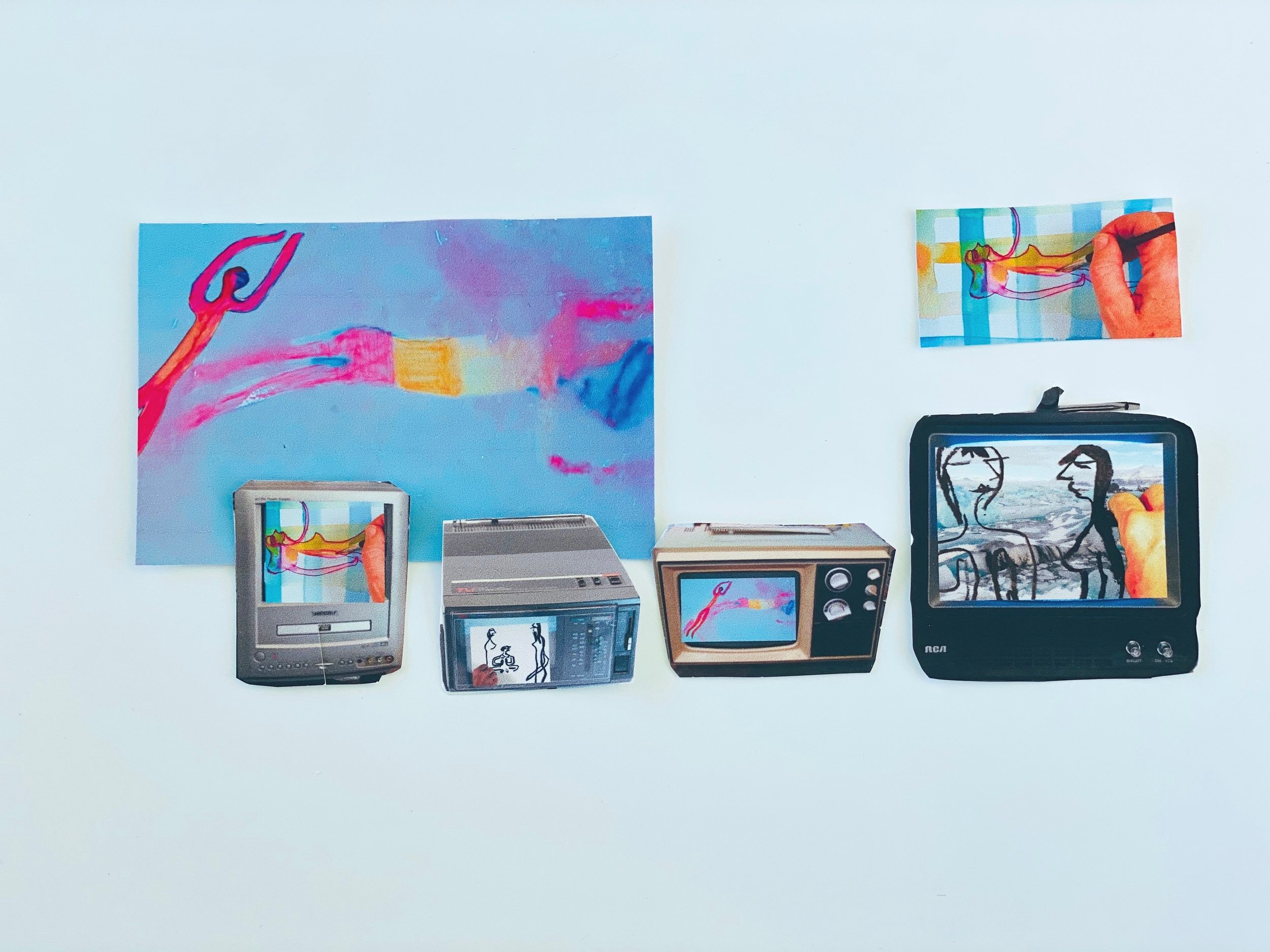
Please tell us about the next solo exhibition you wish to share?
“I am currently working on a solo exhibition that will open in March 2023 at Luis De Jesus Los Angeles. It is a cathartic experience where I attempt to revise my childhood experience metaphorically. I reconnect with my sad emotional state of the time, and I transform it to create my siblings and I into loveable, secure, and happy teenagers. As semi-figurative protagonists, we each have our own environment and ways of being and moving. Our fantastic new doppelgangers are the cure against our embarrassments from the past, and release new energetic versions of us in the world.
In the past, I have presented exhibitions as shown:
Solo Exhibitions - at Luis De Jesus Los Angeles, Office Space SLC, VOLTA New York, CB1 Gallery, and Creative Artists Agency (CAA) Los Angeles.
Group exhibitions include - Satellite Art Fair Miami 2021, King's College, Cambridge UK, Terrain Biennale, Chicago, Flat Iron Projects Space, New York, School Of Visual Arts SVA NY, Tiger Strikes Asteroid TSA_PDF NY, Art Toronto Fair; UNTITLED Miami Beach; LAX-Los Angeles Airport; Chinese American Museum, Los Angeles; Woodbury University, and The Colburn Music School, Los Angeles.
My work has been featured in numerous publications, including The Los Angeles Times, KCRW DNA Radio, Emerging Artists Collective, Art and Cake, Beautiful/Decay, Artillery, Huffington Post, waterwheel.net, KCET.org, and Whitehot Magazine.
Finally, I participated in RCA, Royal College of Art Summer Program 2021, and SVA, School Of Visual Arts NY Summer Residency Project in 2020.”
Website: www.ediebeaucage.com
Instagram: @ediebeaucage




